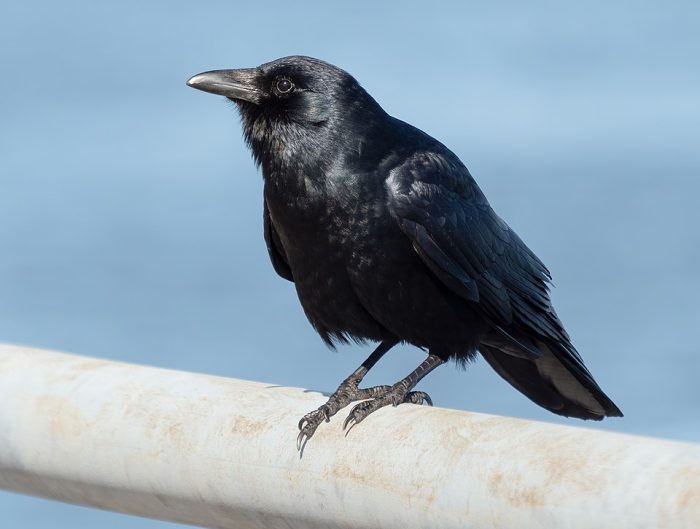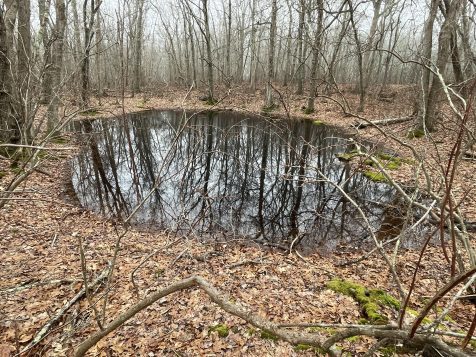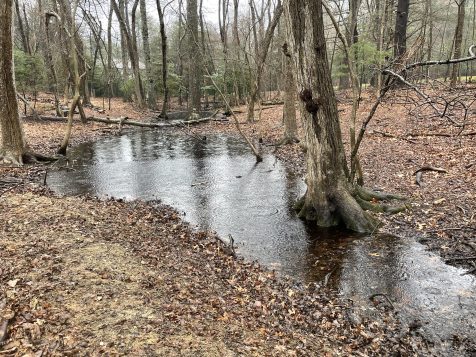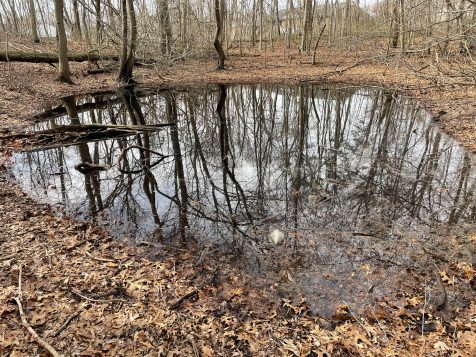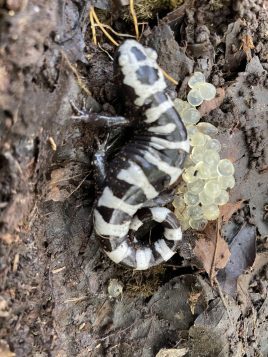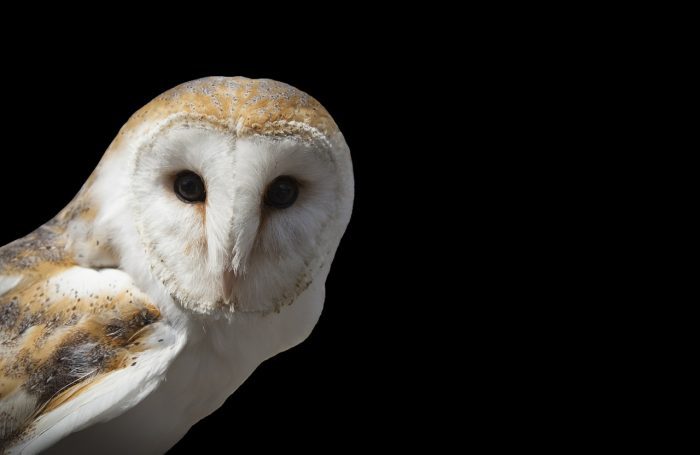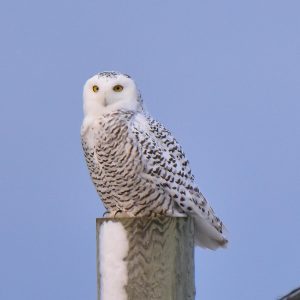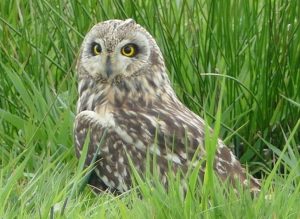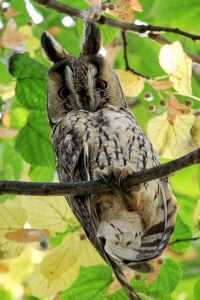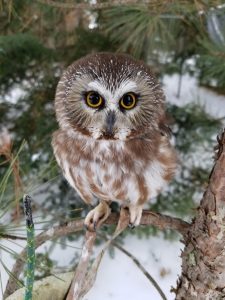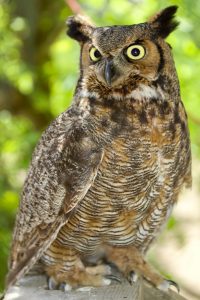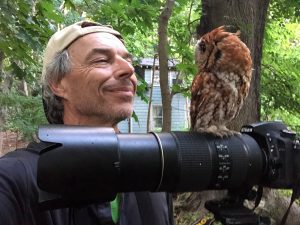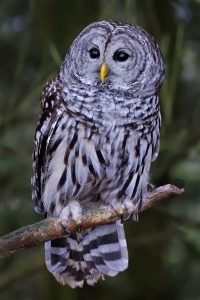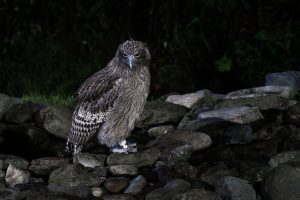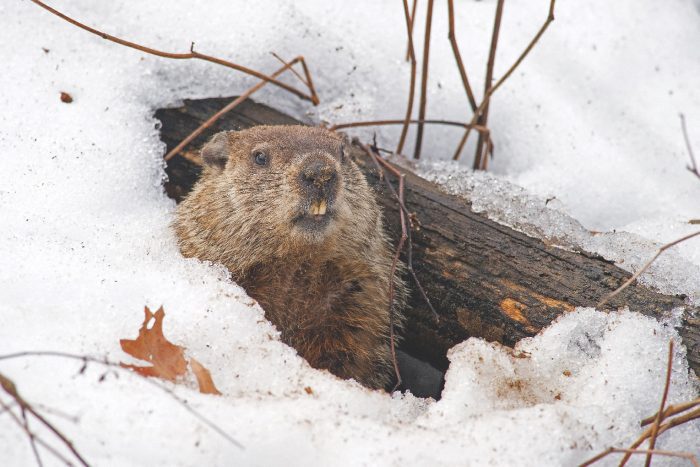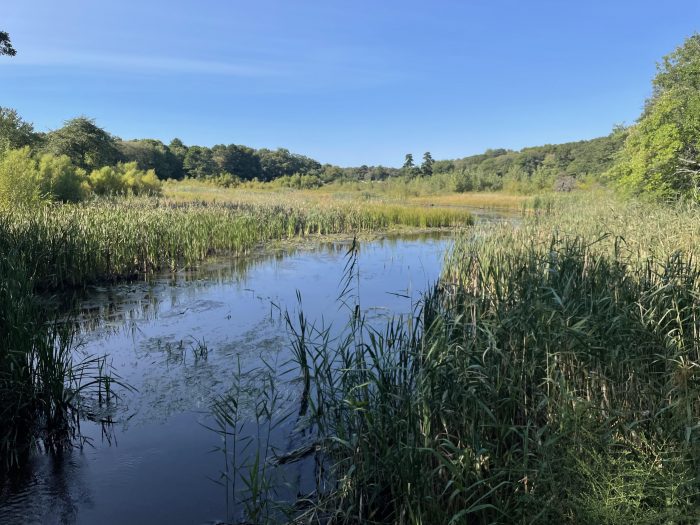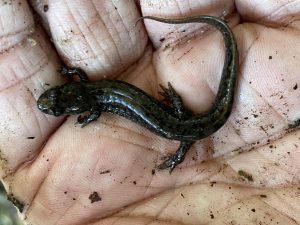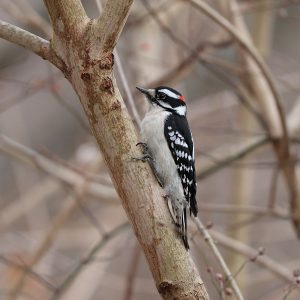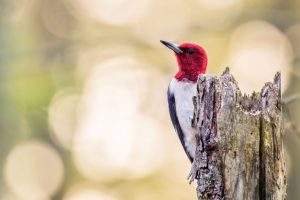By John L. Turner

Walking out of the returnable bottle vestibule at the local supermarket, I looked up to see a swirl of black forms, circling and swooping over the parking lot. I quickly counted eighteen crows and wondered what they were doing and what species was involved? A dozen landed on the building parapet, sitting in even spaced intervals about three feet apart and began vocalizing — I got the answer to the second question as their deeply nasal caw gave them away — I was watching a flock of Fish Crows, or as a flock of crows is also called “A Murder of Crows,” right here in a suburban parking lot.
Fish Crows, which breed here, are a member of the Corvid family (or Corvidae) which has three other representatives of this fascinating bird family on Long Island — Blue Jay, American Crow and the Common Raven, a relative newcomer to the island’s avifauna. (The Raven is also the largest songbird in the world, an interesting factoid you can impress people with at cocktail parties). There are twenty-three corvid species in North America with other representatives of the family including magpies, nutcrackers, and scrub jays.
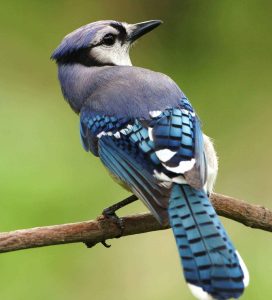
As for the answer to the first question about their collective behavior, each and every bird was doing something important since such rapid communication was taking place between crows. The perched birds called repeatedly, almost incessantly, projecting their head forward to emphasize the call, so much so I thought they might tumble from the building edge! A few more joined the scene flying north from the nearby home improvement store and they proceeded to land on the parking light poles of the supermarket, cawing as they flew in.
I watched for at least ten minutes as they called back and forth and I felt simultaneously amused and frustrated in not being able to enter their world and understand what the fuss was all about. The spring mating season would soon be here with the birds pairing up to raise the next generation of fish crows. Was this the crow equivalent of a farewell party? Whatever the reason, it was a pleasure to watch a group of animals socializing in such an animated way. It brought a smile to my face.
Another supermarket customer came out and once he passed the entrance overhang looked up, presumably drawn by my upward gaze and the raucous calling. He formed his arms as if he were firing a rifle and raised them in the direction of the birds. My smile immediately disappeared as his attitude and intent was clear. I said something to him that I cannot repeat in this family newspaper and his reaction, so immediate and spontaneous as to reveal his true attitude, darkened my mood for much of the day.
In fact, his attitude of hostility toward crows is an all too common one. Based on New York State hunting regulations, promulgated by the Department of Environmental Conservation, you can kill as many crows as you want, each and every day, during a six month hunting season running from September 1st to March 31st. All this despite the fact that virtually no one hunts crows to eat them — they are shot for “sport.” The state agency, created to “conserve the environment,” one that you support with hard earned tax dollars, is in support of suffering and a wanton waste of life.
While some have a negative view of crows, a more positive view is developing, fostered by a recognition they are remarkably smart birds, a fact borne out by experiment and observation.
The results of a recently published trial relating to “geometric regularity” bears this out. In this study, researchers rewarded crows if they correctly identified a shape which is different from a group of other displayed shapes — like four stars and a crescent. If a crow pecked at the crescent it would be given a treat, a delicious mealworm! The crows’ abilities were tested when it came to shapes that were different but in more subtle ways such as a square and another quadrilateral figure with which the angles and lines varied little. The subtlety didn’t matter as the birds pecked the correct symbol and got the mealworm.
We know from ample experiments and observations that crows are one of the few bird groups that use tools. In one famous set of experiments, crows had to know to drop rocks into a tube of water to raise the water level enough to reach a floating treat. They did this well and when confronted with two tubes, one containing water and the other sand, knew not to bother with the sand filled tube.
In another experiment crows knew to insert one tube into another to gain enough length to reach food. The use of compound tools, as displayed by crows, has only been seen in Great Apes.
To round out the intelligent capabilities of crows, they are known to recognize and distinguish human faces, being able to remember them for many years. What’s the reason for such intellectual prowess? Well, part of it has to do with the fact that corvids have large brains in comparison to their bodies. But the main reason has to do with the high density of neurons corvid brains possess and the overall complicated structure of the corvid brain.
This time of year crows and other corvids have paired up to breed and raise a new generation. They will stay paired for the next couple of months but as summer wanes and the cooler weather arrives you’ll notice a change in their behavior. The pair bonds dissolve and the crows, ever gregarious and social, will spend the winter in flocks which can number in the hundreds, during which time individual crows observe the behavior of other crows learning: What do they eat? In what direction and how far do they fly from their overnight winter roost to find feed? How do they detect and avoid predators? This social aspect of crows also helps to explain their overall adaptability and intelligence, traits that if my fellow shopper knew, might result in him replacing his knee jerk aggressive gesture with a sense of admiration.
A resident of Setauket, author John L. Turner is a naturalist, conservation co-chair of the Four Harbors Audubon Society, and Conservation Policy Advocate for the Seatuck Environmental Association.

